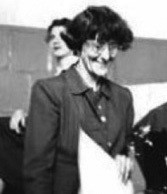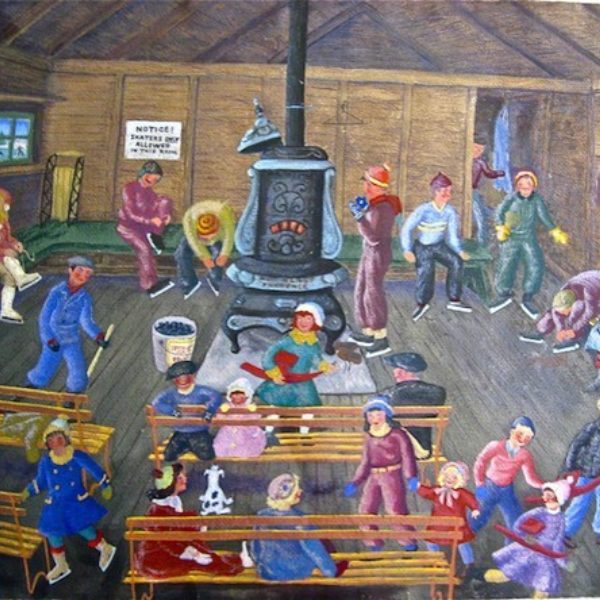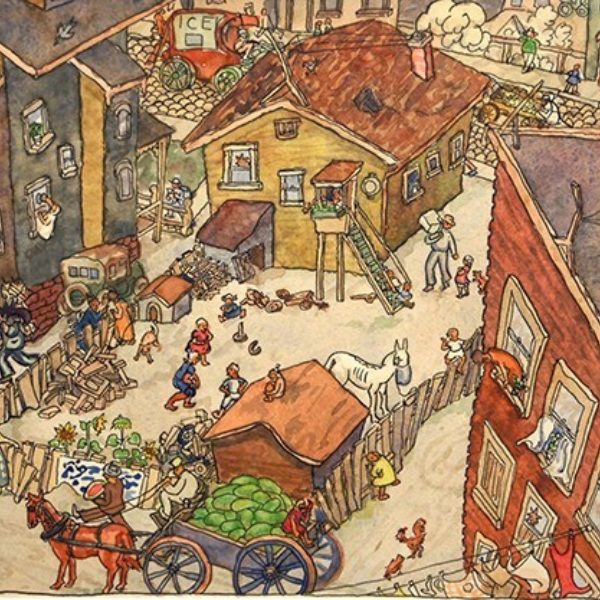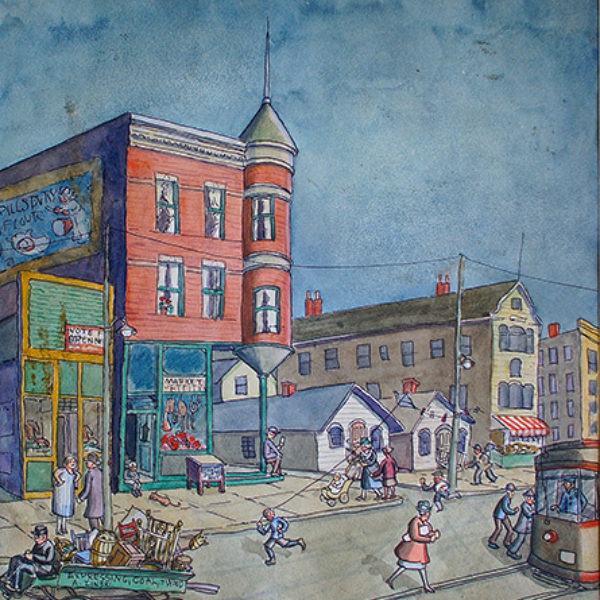
Ethel Spears
b. 1903, Chicago, IL - d. 1974, Navasota, TX
Ethel Spears was born October 5, 1902, and raised in Chicago. She studied both textile design and painting at the School of the Art Institute of Chicago (SAIC), working under modernist painter John Norton. While a student, she completed two mural commissions for the Tea Room of the Art Institute, establishing her career as a painter and a humorist.
In the mid-1920s, Spears moved to Woodstock, New York, for nine months to study drawing with sculptor Alexander Archipenko. She then settled in New York City, where she lived for five years, attending classes at the Art Students League and supporting herself with odd jobs. About 1929, she went to Paris, but by 1930 she was back in Chicago taking additional classes at the Art Institute, which had gradually become more modernist in its orientation. Spears adopted the increasingly accepted regionalist practice of depicting genre scenes of city life, seen in many of the works in the Friedman art collection, including: Diner, In the Old Neighborhood, and The Art Class. In Untitled (Prepare for a Rainy Day), 1926, everybody is selling something on State Street, where windows are filled with men’s suits, “For Sale” signs adorn even the car in the street, and an apple vendor tempts a young child. These lively gouache and oil paintings of urban life in Chicago reflect the artist’s strong interest in folk and naïve art. They also show a penchant for turning people into patterns, which reflects, perhaps, her background in textile design.
In 1937, Spears began her twenty-four-year career as an instructor at the SAIC, teaching design, painting, ceramics, enameling, and silkscreen printing, and exposing her students to primitive and non-Western art with visits to the Field Museum and the Oriental Institute at the University of Chicago. Spears was a regular participant in annual regional exhibitions at the Art Institute, exhibiting more than twenty times between 1926 and 1951, including a 1944 two-person show with Rowena Fry in what was called the “Room of Chicago Art.” She exhibited her work often in Chicago and New York, won awards from the Art Institute, and had work in collections of the Union League Club of Chicago and the University of Illinois. She completed twenty-three murals for the Works Progress Administration (WPA) in Chicago and was a member of the National Society of Mural Painters.
By the late 1950s, Spears was suffering from lead poisoning, likely due to the poor ventilation in the enameling studios. In 1961, she retired and moved to Navasota, a small town in southwest Texas that was the hometown of her companion, Kathleen Blackshear. She died there on August 2, 1974, and is buried in the Oakland Cemetery in Navasota, in the plot next to Blackshear, who died in 1988.
Lisa Meyerowitz
References
Becker, Heather. Art for the People: The Rediscovery and Preservation of Progressive- and WPA-Era Murals in the Chicago Public Schools, 1904–1943. San Francisco: Chronicle Books, 2002.
Bulliet, C. J. “Artists of Chicago Past and Present, no. 82: Ethel Spears.” Chicago Daily News. May 1, 1937: 4R.
Greenhouse, Wendy. “Ethel Spears (1903–1974).” M. Christine Schwartz Collection, www.schwartzcollection.com/artists/ethel-spears.
Hall, Michael D., and Pat Glascock. Great Lakes Muse: American Scene Painting in the Upper Midwest, 1910–1960. Flint, MI: Flint Institute of Arts, 2003.
Illinois Women’s Artists Project, http://iwa.bradley.edu/?q=artists/EthelSpears.
Landauer, Susan, and Becky Duval Reese. Independent Spirits: Women Painters of the American West, 1890–1945. Berkeley: Autry Museum of Western Heritage and University of California Press, 1995.
Rockford College of Art Gallery. The “New Woman” in Chicago, 1910–1945: Paintings from Illinois Collections. Rockford, IL: Rockford College, 1993.
Spears, Ethel. Pamphlet file P-32735. Ryerson Library. Art Institute of Chicago.
Stearns, Robert. Illusions of Eden: Visions of the American Heartland. Minneapolis: Arts Midwest, 2000.
Yochim, Louise Dunn. Role and Impact: The Chicago Society of Artists, p. 274. Chicago: Chicago Society of Artists, 1979.
Artist Image: Ethel Spears / unidentified photographer. Estate of Ethel Spears (Thomas McCormick Gallery).


